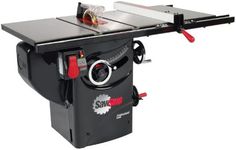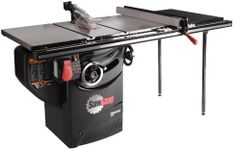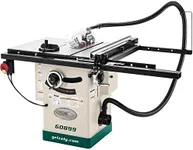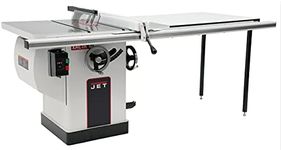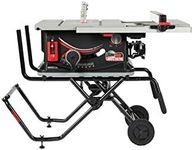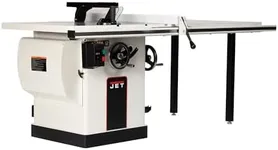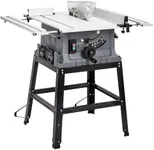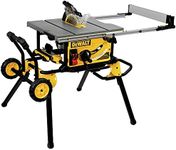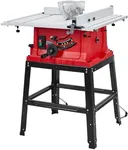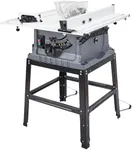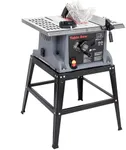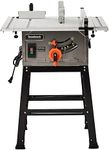Buying Guide for the Best Sliding Table Saws
Choosing the right sliding table saw can make a significant difference in your woodworking projects. A sliding table saw is a versatile and powerful tool that allows for precise cuts and efficient handling of large pieces of wood. To find the best fit for your needs, it's important to understand the key specifications and how they impact the performance and usability of the saw. By considering these factors, you can ensure that you select a sliding table saw that meets your specific requirements and enhances your woodworking experience.Motor PowerMotor power, measured in horsepower (HP), determines the cutting capability and efficiency of the saw. Higher horsepower means the saw can handle tougher materials and make smoother cuts. For light to moderate woodworking tasks, a motor with 1.5 to 2 HP is usually sufficient. For more demanding projects or professional use, consider a motor with 3 HP or more. Assess the types of materials and the frequency of use to determine the appropriate motor power for your needs.
Blade SizeThe blade size, typically measured in inches, affects the depth and type of cuts you can make. Common blade sizes for sliding table saws range from 10 to 12 inches. A 10-inch blade is suitable for most general woodworking tasks, while a 12-inch blade offers greater cutting depth and is better for larger, thicker materials. Consider the types of projects you will be working on and choose a blade size that matches your cutting requirements.
Sliding Table LengthThe sliding table length determines the maximum size of the material you can cut. Longer sliding tables provide better support for large panels and sheets, making it easier to achieve precise cuts. Sliding table lengths can vary from around 4 feet to over 8 feet. If you frequently work with large pieces of wood or sheet goods, opt for a longer sliding table. For smaller projects or limited workshop space, a shorter table may be more practical.
Rip CapacityRip capacity refers to the maximum width of material that can be cut to the right of the blade. This is important for making wide cuts and handling large panels. A rip capacity of 30 inches is adequate for most home woodworking projects, while a capacity of 50 inches or more is ideal for professional use and larger projects. Consider the typical size of the materials you work with and choose a rip capacity that accommodates your needs.
Fence SystemThe fence system is crucial for making accurate and straight cuts. A good fence system should be sturdy, easy to adjust, and lock securely in place. Look for a fence that glides smoothly and provides precise measurements. Some advanced models offer micro-adjustment features for even greater accuracy. Evaluate the quality and ease of use of the fence system to ensure it meets your precision requirements.
Dust CollectionEffective dust collection is important for maintaining a clean and safe working environment. Sliding table saws can generate a significant amount of sawdust, so a good dust collection system helps to minimize mess and improve air quality. Look for saws with built-in dust ports that can be connected to a vacuum or dust extractor. Consider the efficiency of the dust collection system and how it integrates with your existing workshop setup.
Safety FeaturesSafety features are essential to prevent accidents and injuries while using the saw. Common safety features include blade guards, riving knives, and emergency stop buttons. Some models also offer advanced safety technologies like flesh-sensing systems that stop the blade instantly upon contact with skin. Prioritize saws with comprehensive safety features to ensure a safe working environment, especially if you are a beginner or will be using the saw frequently.
